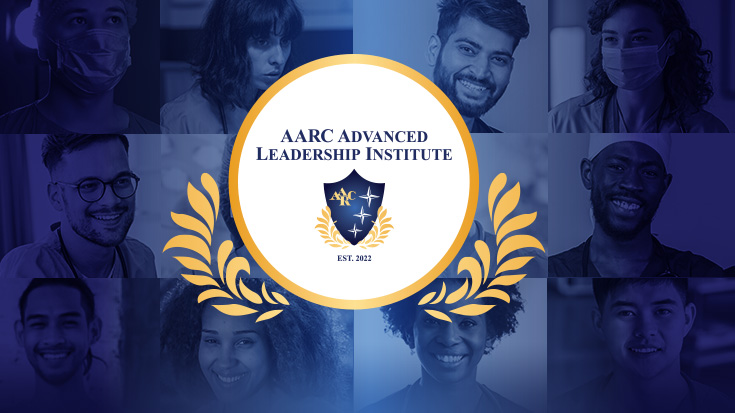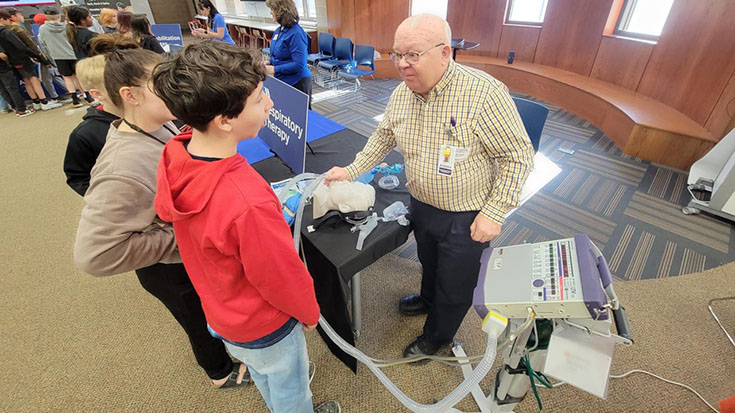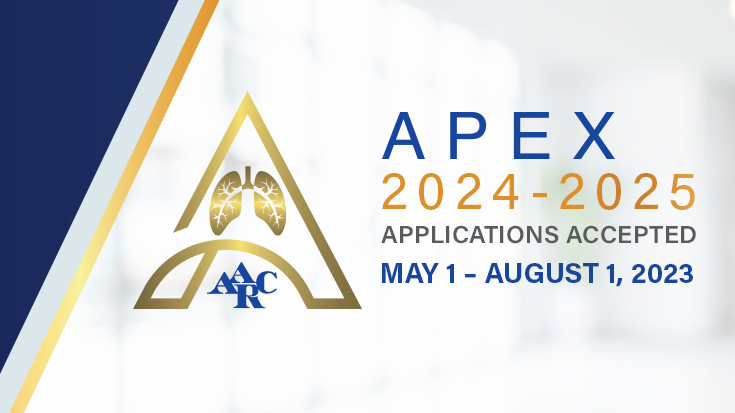
Respiratory therapists are integral to the care of infants and children with conditions that affect the pulmonary system, and as such they are key members of interdisciplinary teams. How does this play out in children’s hospitals across the country?
Four AARC members explain the value RTs add in their facilities and offer advice for neo/peds RTs who would like to make the most of the opportunity to participate on the interdisciplinary team.
RTs always on board
“The interdisciplinary team approach is the most common method used for patient care, education, and research at Children’s Hospital of Philadelphia,” said RT Department Director Lisa Tyler, RRT, RRT-NPS, RRT-ACCS, RPFT, AE-C. “These teams are used to develop capacity management support, patient care standards, care model and skill mix changes, research innovation, professional development, and education platforms, as well as acute, emergency, and critical care support.”
Tyler says they all include at least one respiratory therapist, and often many more, and she believes that’s only fitting.
“Respiratory therapists have the knowledge, expertise, and skill set to enhance the team process, whether it is clinical, education, or research focused,” she said. “They bring a different perspective and way of thinking to the group . . . that is why it is so important for respiratory therapy to be part of the process from beginning to end.”
Tyler’s top recommendations for neo/peds RTs —
- Be present and use your voice! There are many things that you know as an RT that other disciplines do not, just as they know some things that you do not.
- It is the common goal that brings the team together, and the respect for what each member brings to the table that drives positive change.
- Be okay with constructive conflict; it shapes better outcomes.
Huddle up
Interdisciplinary teams at AnMed Health Women’s and Children’s Hospital in Anderson, SC, focus on everything from improving processes and patient outcomes to bringing interdisciplinary decision-making to the beside. RTs play an especially important role on the latter.
“For example, infants who are candidates for high-flow nasal cannula oxygen therapy are assessed using a team huddle prior to starting therapy, one hour after starting therapy, and every four hours around the clock until the patient is weaned off of high-flow therapy,” said Mike Shoemaker, MBA, RRT, RRT-NPS, AE-C, operations manager for respiratory care services, pulmonary rehab/diagnostics, and the Asthmania Academy. “The team huddle includes the respiratory therapist, the patient’s nurse, the attending pediatric hospitalist, and often times members of the family as well.”
He believes this process allows information to be shared through direct communication, which is often the best way to address issues that may be impacting the baby right now, such as whether or not the child has a fever that can increase respiratory rate or how the baby looks now as compared to four hours ago.
“The RT often detects small changes in breath sounds or respiratory status that others may not catch or notice,” he said. “In infants and pediatrics, subtle changes often precede a major decline — or improvement — in the patient’s condition, and we are very good at noting those subtle, yet specific, changes. For example, ‘I hear rales in the left lower lobe that I did not hear before.’”
He says the therapist’s understanding of the entire cardiopulmonary system can help guide decision-making when it comes to medications as well, and they are also the experts in the respiratory equipment being used.
“I cannot count the number of times that I have seen a respiratory therapist help improve a patient’s respiratory status by simply ensuring that a cannula is properly positioned, that an oxygen blender is correctly set, that a venturi device has the appropriate flow to deliver the desired FiO2, and so on,” Shoemaker said. “We are very, very good at troubleshooting both the patient and the equipment that is being used by the patient.”
Shoemaker’s top recommendations for neo/peds RTs —
- Clarify the team’s goals and understand why you have been asked to participate.
- See your perspective as perhaps different, but not more (or less) important than others in the group.
- Respect the viewpoint of others.
- Work for the greater good (e.g. better for the patients, better for the organization, better for your community).
- If you are new to the process of working with an interdisciplinary team, take some time to prepare yourself for the challenge. For starters, you might review “Ten Principles of Good Interdisciplinary Team Work” (Nancarrow, et al., 2013).
Key members in the ICUs
Peter Betit, RRT, RRT-NPS, is director of respiratory care and the ECMO program at Boston Children’s Hospital in Boston, MA. He says his hospital utilizes interdisciplinary teams for the management of all patient care elements across all clinical programs and both general RTs and RTs who serve as ECMO specialists are part of the critical care teams in the facility’s four ICUs.
“It is important that RTs and ECMO specialists participate in these teams to ensure that ECMO and mechanical ventilation and associated therapies and procedures are optimized and managed safely,” Betit said. “RTs and ECMO specialists provide expertise in these areas, which contributes to the best possible patient outcomes, and also enhances the MD-trainee’s knowledgebase.”
Betit’s top recommendations for neo/peds RTs —
- Be a subject matter expert in the therapies and technologies associated with the patient population the team is managing. For example, if you are working in a CICU, understanding congenital heart diseases is vital.
- Understand the trends associated with the services provided by your department. For example, unplanned extubation trends, ventilator duration.
- Be an active participant. Volunteer for QI projects, CPGs, working groups.
- Be persuasive when necessary. Ensure your role is recognized and your voice heard.
Providing vital input
Respiratory therapists at Prisma Health-Upstate Children’s Hospital in Greenville, SC, attend bedside rounds in the NICU, PICU, PIMU, and acute care area to provide vital input related to the care plan and progress of the patient, says Suzi Westmoreland, RRT, RRT-NPS, respiratory care services manager. The hospital uses multidisciplinary disciplinary operational teams, or “MDOTs,” as well, which meet on a monthly basis to improve quality and processes within the care teams, and RTs regularly work on clinical project teams aimed at improving patient care.
“Currently there is a multidisciplinary team working with a physician champion on the complex patient discharge,” Westmoreland said. “This includes streamlining discharge and fine-tuning education for patients and families with tracheostomies and/or ventilator dependent patients.” Several of her therapists participant on nursing unit council teams as well, providing information to the unit council and returning information to their RT colleagues.
“The pediatric respiratory therapists are considered nursing’s partners at the bedside, especially in the critical care areas,” Westmoreland said.
“By coordinating care and goals with our nursing and physician colleagues, care is generally more efficient, and the patients have better outcomes.”
She says this is especially important in the NICU, where RTs play a key role on the Small Baby Unit Team. “These infants are less than 1,000 grams and have a specialized care team who have received in-depth education in the care of this fragile population,” she said. “The team works together to coordinate touch times in the isolette to minimize stress to the infant. Outcomes have shown improvement in several VON quality indicators.”
Westmoreland’s top recommendations for neo/peds RTs —
- Utilize a physician champion (aka medical director of the unit) to help with objectives of a clinical team.
- Seek out opportunities to participate on multidisciplinary teams; the teamwork is very rewarding.
- Become the RT expert on the team you are asked to participate on by reading, researching, and reviewing the medical record (if applicable) and asking questions.
- Learn the objectives of the team and attend scheduled meetings to demonstrate commitment to the project and the team members.
Key players
Interdisciplinary teams are becoming more and more common in health care facilities across the board, and nowhere is that truer than in the children’s hospital. As these neo/peds RT managers illustrate, respiratory therapists have an important seat at the table.
Want to up your credibility in the neo/peds setting? Take advantage of the AARC’s Neonatal-Pediatric Specialist Course and then earn your NPS credential through the NBRC.
Email newsroom@aarc.org with questions or comments, we’d love to hear from you.















